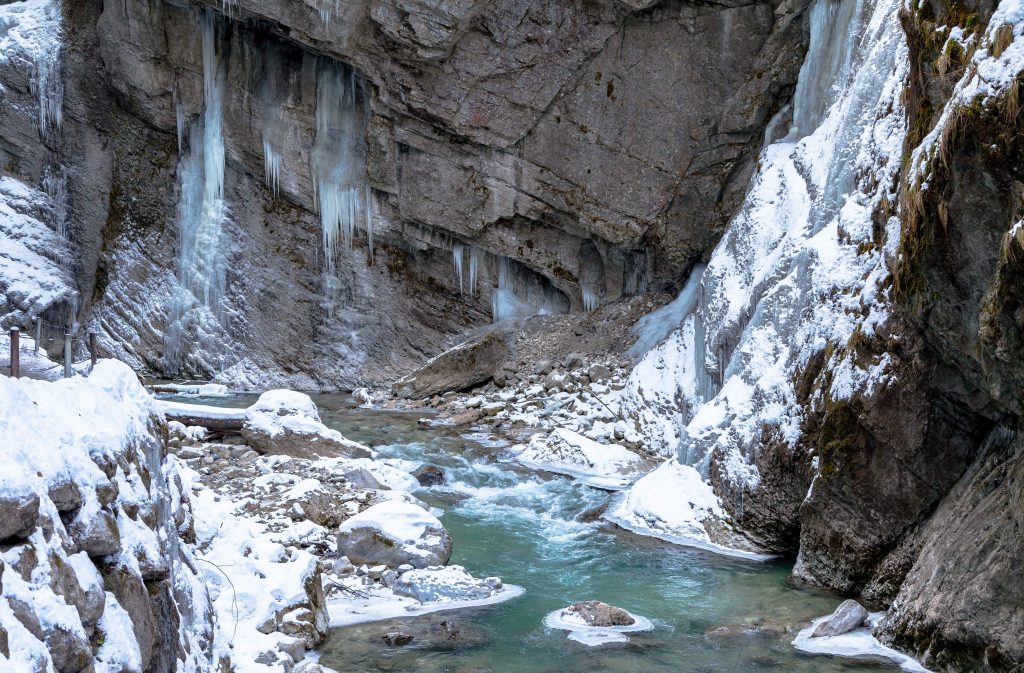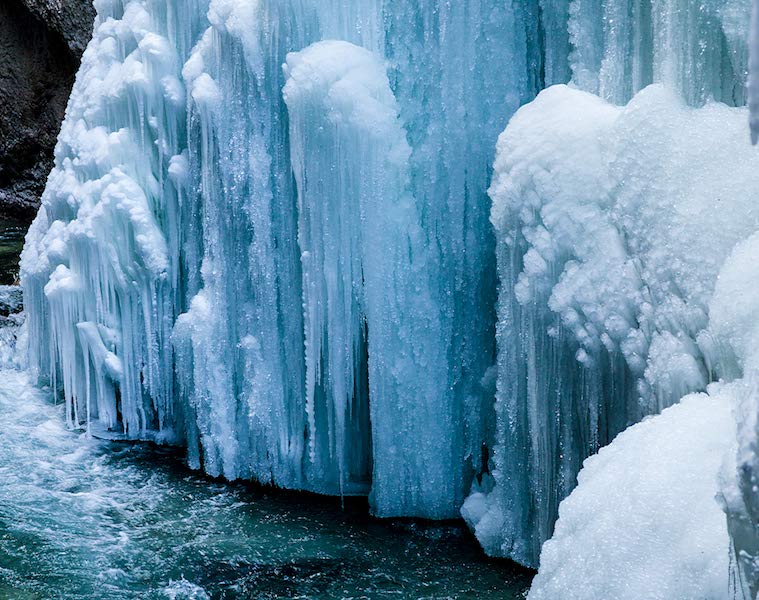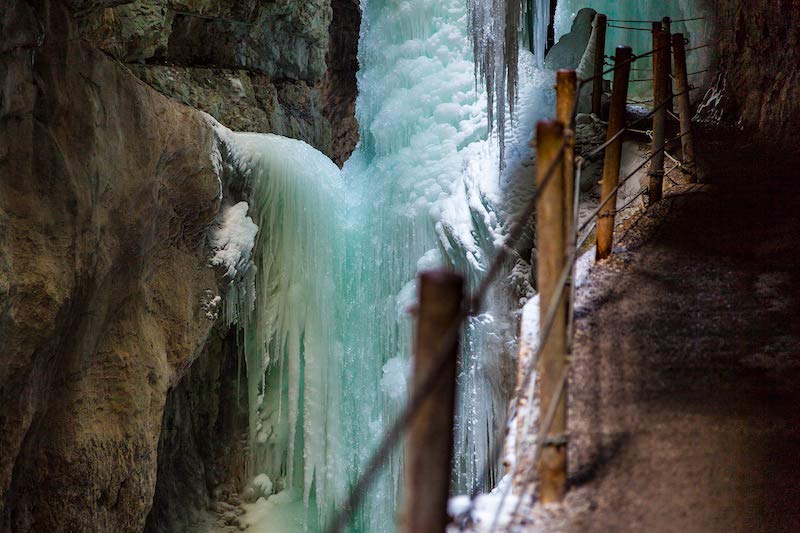Wild Tyrolean Valley After Severe Winter
Musau, Austria, May 19, 2019
In April 2019 there were many fears in Central Europe that 2019 would repeat its extreme weather patterns with a drought in many parts of Germany. Luckily, in May 2019 weather turned back to normal patterns with rain and colder temperatures. Unlike other areas, there had been a lot of precipitation in the Alps during winter 2018/2019. In some places, there were tons of snow. Devastating avalanches threatened some alpine valleys. There had also been some storms which did severe damage in the mountain forest.
A trip into the Alps in May is a fascinating thing. Particularly after a period with the above-mentioned weather extremes. In the higher regions, a hike can begin in “summer” with green meadows and warm temperatures but winter isn’t very far. It is also a chance to see the power of nature. It is the time of devastating thaws when the huge mass of snow melts quickly. And there are many traces of this last winter: Nature is recovering from avalanches and in the mountain forest we see the destructive force of severe storms.
Spring happens late in the mountains. It is a short time span when life returns to the frozen world. It is time to experience both the destructive power of the elements and its incredible beauty.
The Rein valley near Musau in Tyrol offers it all. It is perfect for a trip and is easily accessible. It is one of the most impressive valleys in the Northern Alps. Steep Rock faces, a raging river, a very natural forest and high peaks of the “Allgäuer Berge” makes it an unparalleled experience.
In Musau there is both a train station but also a parking spot, “Bärenfalle” at the beginning of the hike. The first half hour of the walk is in the forest and a steep ascent. After a while, the trail reaches the first vantage points. The peaks of the mountains become visible.
Sunday, May 19, started as a sunny and slightly cloudy day. However, there was a severe weather warning in place. It was said that thunderstorms would already occur before noon. The good weather lasted longer as expected.


The trail is also a forest road which connects the village with the Musauer Alm and the Cabins, the Otto Mayr Hütte and the Füssener Hütte.


After approximately one and a half hour of walking the cosy Musauer Alm comes into sight. It is the perfect opportunity for a stop and getting some good food in a very friendly atmosphere. After the stop which was in the middle of the day, the weather still looked fine. It seemed that the weather forecast wasn’t right. But in the mountains, you need to be very attentive and conditions can change very quickly.

Behind the Musauer Alm, the trail leads higher up into the valley. Here the image changed completely. Instead of the romantic green valley, it looked more and more like a battlefield of the forces of nature. Overturned trees, the remains of an avalanche and huge fields of snow left a deep impression. One could see what the severe winter in the alps did. In some places, it changed the face of the landscape.



Then it happened. It wasn’t too long and early afternoon when the weather changed completely. Rain and thunderstorm clouds appeared quickly from the east. It was time to turn around and head back down into the valley.

Faster than expected the sun appeared again after a heavy rain shower and some thunder in the clouds. It was then when there was a special magic in the landscape.

It was also an opportunity to study the work of erosion near the river. Rain and tough conditions led to mudslides and other destruction.


Later in the afternoon, the sky was overcast. After the rain mist ascended from the forest. It was a completely different, more mystical air. It proved again that rainy weather is often the most interesting weather condition for dramatic pictures in the mountains.

The wet weather attracted also a special animal, which is rare to see. The black salamander.

The spectacular valley and the Musauer Alm is not far from the famous town of Füssen (with the prominent Neuschwanstein castle). On the Austrian side, Reutte and the “Lechtal-Region isn’t far. The Lechtal with the river Lech is one of Europe’s last river wilderness regions. It contains different types of forest, rich animal life and more spectacular mountain sceneries.
In some places, there was indeed severe weather on May 19. In East-Germany flooding was reported and there were heavy thunderstorms. It was also the beginning of a long rainy period with some flooding in Southern Germany. This is not unusual for May. In 1999 and 2005 there were floods which led to a lot of destruction. The events of 1999 gave reason to improve precautions against flooding for example in Garmisch-Partenkirchen in Upper Bavaria.






















